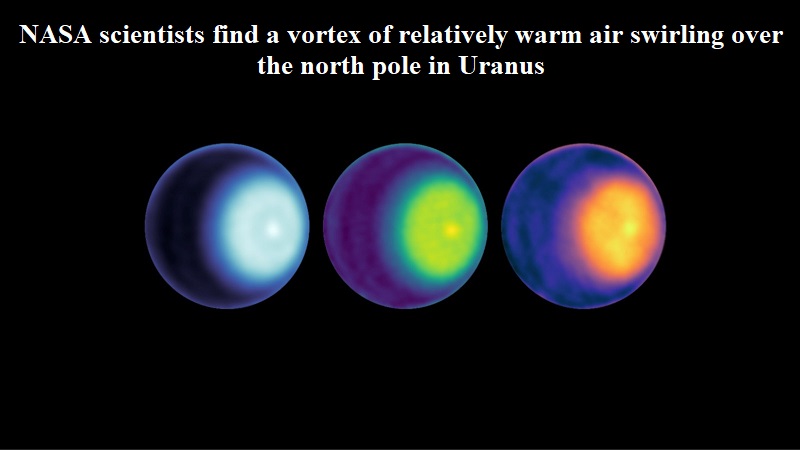
NASA scientists have made a groundbreaking discovery of a cyclone on Uranus, providing strong evidence for the existence of a vortex of relatively warm air swirling over the planet’s north pole.
This unique phenomenon was observed using a telescope in New Mexico, which allowed scientists to gain a deeper understanding of Uranus’s atmosphere and led to the discovery of the polar cyclone, with its center measuring a quarter of Earth’s diameter.
Microwave observations were utilized by the scientists to identify the first polar cyclone on Uranus.
By employing the Very Large Array radio telescope, scientists were able to peer through Uranus’s clouds, enabling them to determine that the air at the north pole was warm and dry, which are typical characteristics of a strong cyclone. The observations were gathered in 2015, 2021, and 2022.
This discovery has altered our understanding of Uranus, which was previously thought to have an atmospherically inert nature when NASA’s Voyager 2 spacecraft flew past the planet in January 1986.
Alex Akins, a planetary scientist from NASA’s Jet Propulsion Laboratory in California and lead author of the research published in Geophysical Research Letters, remarked on Uranus’s unique features, such as its sideways rotation and misaligned magnetic field. Although its atmospheric circulation and internal heat release seem weaker than Neptune, Uranus still exhibits a range of dynamical features and storms.
Unlike Earth’s cyclones, the polar vortex on Uranus is not composed of water vapor but rather ices of methane, ammonia, and hydrogen sulfide. Additionally, the storm remains fixed at the pole without drifting. Currently, little else is known about this phenomenon.
Swirling vortices have been observed at the poles of most planets in our solar system, regardless of whether they are composed of rock or gas. Similar vortices have been identified on Venus, Earth, Mars, Jupiter, Saturn, Uranus (at its south pole), and Neptune. It is believed that the formation of these vortices is attributed to high-altitude atmospheric jet streams, although the specific details vary on each planet.

Post Your Comments